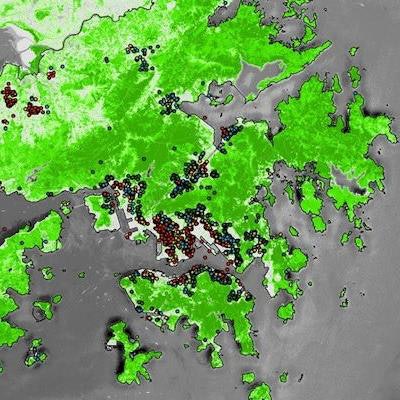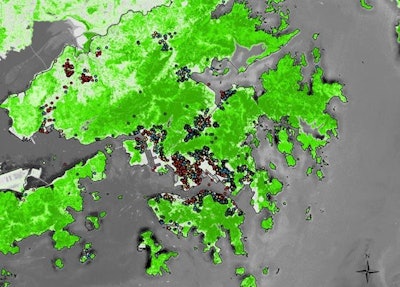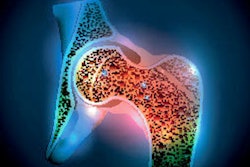
For older adults living near Hong Kong's green space, the grass may not be greener -- at least in terms of bone health. A recent study found that participants who lived closer to the city's green space actually had lower levels of bone health.
Researchers at the Chinese University in Hong Kong evaluated bone mineral density on dual-energy x-ray absorptiometry (DEXA) in osteoporosis patients and found lower bone density scores and higher fracture risk in those living in more of the city's green space.
"We found that those who lived near higher [green space] levels had a slower increase in lumbar spine [bone mineral density] and had higher incident fracture risk," wrote Jiesheng Lin, of the university's Institute of Future Cities, and colleagues in a study published June 22 in Environmental Research.
A large body of literature has reported on the positive health effects of green space. Living near more green space is associated with better physical functioning, lower body mass index, lower cardiovascular disease risk, and lower mortality risk, according to the authors.
To further investigate this association, Lin and colleagues enlisted a prospective cohort of 3,944 Chinese men and women in Hong Kong over the age of 65 who had been recruited in a previous study between August 2001 and December 2003. The study included four rounds of follow-up between November 2015 and September 2017.
All patients underwent DEXA scans (QDR 4500, Hologic) at baseline and during follow-up visits for bone mineral density of the whole body, lumbar spine (L1-L4), total hip, and femoral neck. Fractures were identified during visits, phone calls, and a database search of visits by participants to local clinics and emergency departments.
The researchers created a vegetation map using software that associated pixels in satellite images with green space. They plotted each resident within 300- and 500-meter geodesic "buffer zones" to calculate how much green space exposure they received within walking distance from their homes.
 Detail of geographical distribution of the participants' baseline addresses by quartiles of green space. Image courtesy of Environmental Research.
Detail of geographical distribution of the participants' baseline addresses by quartiles of green space. Image courtesy of Environmental Research.Analysis showed that exposure to higher levels of green space was associated with a slower increase in lumbar spine bone mineral density, but not with changes in total hip and femoral neck measures, the researchers found. Moreover, they observed green space was positively associated with risk of fracture incidence for residents in both the 300- and 500-meter buffer zones.
"To the best of our knowledge, this is the first study investigating the associations of [green space] with [bone mineral density] and incident fracture. However, we failed to observe a protective effect of [green space] on bone health, which was against our hypothesis," Lin and colleagues wrote.
The authors hypothesized that the associations between green space and bone health may be mediated by physical activity, and it may be that participants living near more green space are more likely to be less physically active. They cited two cross-sectional studies that reported inverse associations of green space with walking and cycling.
Moreover, although the percentage of green space in Hong Kong is 65.4%, most of it is woodland (24.8%) and shrubland (23.8%) located in rural areas, which are not accessible to urban residents, according to the authors.
The relationships between green space and health outcomes are complex and represent a component of the overall impact of urban design and neighborhood factors, the authors stated.
"More studies are warranted to replicate our findings," they concluded.




















